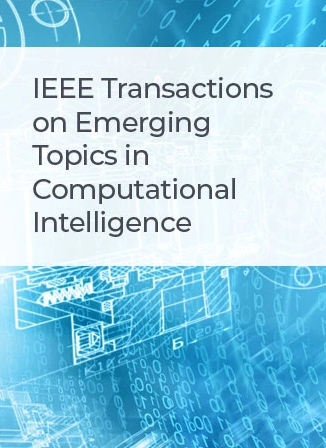AdptGL-CA:基于对比注意的自适应全局-局部度量融合算法
IF 5.3
3区 计算机科学
Q1 COMPUTER SCIENCE, ARTIFICIAL INTELLIGENCE
IEEE Transactions on Emerging Topics in Computational Intelligence
Pub Date : 2025-03-27
DOI:10.1109/TETCI.2025.3550529
引用次数: 0
摘要
少射学习(FSL)旨在通过非常有限的标记数据学习新概念。流行的FSL方法通常依赖于度量学习来测量学习到的特征空间中的图像相似性。然而,现有的方法往往忽略了相似度度量与特征表示之间的协同作用,未能充分利用全局特征与局部特征的结合来进行有效的相似度度量。在本文中,我们提出了一种新的FSL方法,AdptGL-CA,该方法自适应地使用全局和局部特征来增强相似性度量的识别能力,同时分别通过注意机制和对比学习来提高特征表征和泛化能力。具体而言,我们设计了一种可学习的自适应融合策略,以全局相似度表示任务特定状态,自适应确定局部相似度的融合权重,从而有效地融合双相似度,以获得更好的分类效果。此外,在调整局部描述符的重要性的同时,利用通道和空间关注来突出特征的显著部分,以提高特征的表示。作为相似性度量的输入,这些信息量更大的特征进一步增强了相似性度量的判别能力。此外,引入了对比学习损失来克服潜在的对基类的过拟合,并学习更多的通用特征。此外,我们将PAC-Bayes-Bernstein绑定扩展到FSL设置,引入了一个理论上有根据的评估泛化的度量。理论分析验证了AdptGL-CA的泛化改进。综合实验表明,AdptGL-CA在多标准和细粒度的少次基准测试中,以较少的额外参数获得了具有竞争力的性能,显示了有效性。本文章由计算机程序翻译,如有差异,请以英文原文为准。
AdptGL-CA: Adaptive Global-Local Metric Fusion With Contrastive Attention for Few-Shot Learning
Few-shot learning (FSL) aims to learn novel concepts with very limited labeled data. The popular FSL methods typically rely on metric learning to measure image similarity in a learned feature space. However, existing approaches often overlook the synergy between the similarity metric and feature representation, and fail to fully exploit the combination of global and local features for effective similarity measurement. In this work, we propose a novel FSL method, AdptGL-CA, which adaptively uses global and local features to boost the discrimination capability of similarity metric, while improving feature representation and generalization through attention mechanism and contrastive learning, respectively. Specifically, we design a learnable adaptive fusion strategy that uses global similarity to represent task-specific status to adaptively determine the fusion weight of local similarity, thus effectively fusing the dual similarities for better classification. Besides, the salient parts of features are highlighted using channel and spatial attentions to improve feature representation while adjusting the importance of local descriptors. As the input to the similarity metric, these more informative features further boost its discriminative ability. Moreover, a contrastive learning loss is introduced to overcome the potential overfit to base classes and learn more generic features. Additionally, we extend the PAC-Bayes-Bernstein bound to FSL setting, introducing a theoretically grounded measure for assessing generalization. Theoretical analysis validates the generalization improvement of AdptGL-CA. Comprehensive experiments indicate that AdptGL-CA achieves competitive performance with few extra parameters on multiple standard and fine-grained few-shot benchmarks, showing the effectiveness.
求助全文
通过发布文献求助,成功后即可免费获取论文全文。
去求助
来源期刊

IEEE Transactions on Emerging Topics in Computational Intelligence
Mathematics-Control and Optimization
CiteScore
10.30
自引率
7.50%
发文量
147
期刊介绍:
The IEEE Transactions on Emerging Topics in Computational Intelligence (TETCI) publishes original articles on emerging aspects of computational intelligence, including theory, applications, and surveys.
TETCI is an electronics only publication. TETCI publishes six issues per year.
Authors are encouraged to submit manuscripts in any emerging topic in computational intelligence, especially nature-inspired computing topics not covered by other IEEE Computational Intelligence Society journals. A few such illustrative examples are glial cell networks, computational neuroscience, Brain Computer Interface, ambient intelligence, non-fuzzy computing with words, artificial life, cultural learning, artificial endocrine networks, social reasoning, artificial hormone networks, computational intelligence for the IoT and Smart-X technologies.
 求助内容:
求助内容: 应助结果提醒方式:
应助结果提醒方式:


